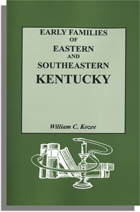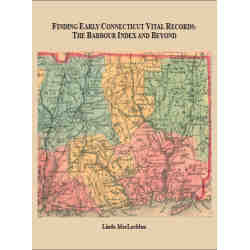
Some genealogists collect only ancestors, that is, people from whom they are personally descended. When traced out on a sheet of paper or a spreadsheet you have a pattern resembling an inverted Christmas tree, wide at the top and pointed at the bottom. Others take a great deal of trouble to track down collateral relatives, the siblings of ancestors and their descendants. If they began with a couple of progenitors, the result will tend to spread more widely with the passing of the generations.
[av_image src=’https://genealogical.com/wp-content/uploads/2018/08/5048-300×198.jpg’ attachment=’5292′ attachment_size=’medium’ align=’right’ styling=” hover=” link=” target=” caption=” font_size=” appearance=” overlay_opacity=’0.4′ overlay_color=’#000000′ overlay_text_color=’#ffffff’ animation=’no-animation’ admin_preview_bg=” av_uid=’av-2jlfs8′][/av_image]
This is not always the case. One couple had eleven children, sixteen grandchildren, but just four great-grandchildren, all four of whom grew to adulthood, two of them married and none of them had children. Within three generations a large family had completely died out. Imagine the original matriarch, dying in 1883 leaving eight children and nine grandchildren, and in 2003 her last descendant died, childless.
One of the reasons why people try to compile genealogies linking collateral relatives as well as direct ancestors is to produce a health history of their wider family circle. They ask questions about age at death, causes of death, conditions that appeared to run in the family, handicaps, tendency to accidents and mishaps, even towards suicide.
A circumstance that interferes with this effort is that records, if they exist, often fail to reveal people’s cause of death. Another snag is that the deaths were attributed to conditions and ailments with unfamiliar names. We really do have to wonder who made the diagnosis written down as the cause of death. We can understand “drowned”, “typhoid” or “pneumonia”, but what did someone mean by “senile decay”? Had the patient become mouldy with age? And what did the sexton mean when he entered “senility” as the reason that a 3-year-old died? To allege “premature ageing” would be ridiculous. Since the same man gave that cause of death to more than one child, we can assume that he did not understand the word.
Whenever possible, learn whether there were outbreaks of epidemic disease in an area about the time your relative died. If a child died while a smallpox outbreak ravaged the vicinity, consider that may have killed your family member too. Halifax had smallpox at the turn of the nineteenth century, as well as cholera epidemics a few decades later. There was a visitation of the mis-named “Spanish” influenza after the end of World War One.
Nor should we forget disasters such as the Halifax explosion of 1917, or mine disasters. In coastal communities several men may have perished in a marine mishap. Diphtheria wiped out households of children, as did scarlet fever and so forth. In doing a genealogy, be alert to these group deaths, as they may signify the presence of contagious disease or some tragedy, such as a house fire. Not to be morbid, but the media tended then, as now, to cover such events. Victorian papers seem to have revelled in headlines such as “Melancholy accident”, “Tragedy at sea”, etc.
Here are some examples I’ve seen in records:
ague – any of several feverish conditions, e.g., malaria (not so odd when you remember how many seamen visited tropical ports in the age of sail, and contracted illnesses).
bad blood – euphemism for venereal disease, especially syphilis.
bilious fever – any of hepatitis, malaria, typhoid (caused by bacteria salmonella)
bladder in the throat – diphtheria
carbuncle – large boil (not usually fatal); skin cancer (then often fatal)
consumption – tuberculosis
cramp colic – appendicitis, peritonitis; also simply ‘colic’.
debility – lack of energy or movement, probably due to an unrecognized illness.
dentition – teething (hard to imagine this as fatal in itself; probably other complications)
dropsy – congestive heart failure; also noted as ‘hydrothorax’
falling sickness – epilepsy
flux – diarrhea; hemorrhage
gleet – inflamed membrane in the urethra
green sickness – anemia
horrors – delirium tremens
infantile paralysis – poliomyletis
jail fever, ship fever – typhus (caused by bacteria rickettsia)
king’s evil – tuberculosis in the neck and lymph glands; also called scrofula (until Queen Anne, monarch actually touched the afflicted; popular belief was that the king’s touch cured it)
milk fever – children contracted this bacterial disease from milk from cows having brucellosis
mortification – gangrene (common before antiseptics)
nostalgia – homesickness; the belief that immigrants died pining for their native land
old age – applied to people as young as 55 (making some of us positively ‘ancient’)
palsy – paralysis; also uncontrollable jerking of limbs; also entered as ‘fits’.
screws – rheumatism
senility – advanced old age; perhaps alzheimer’s; wrongly applied to young people visitation by God – many sudden deaths due to natural causes, e.g, strokes, were called this



